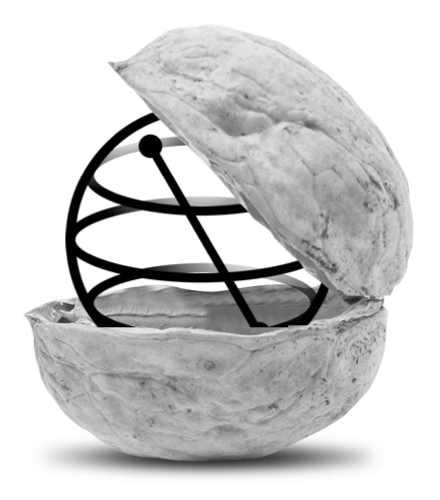Quantum computing in a nutshell¶
Quantum computing represents a new paradigm in computation that utilizes the fundamental principles of quantum mechanics to perform calculations. If you are reading this then you have undoubtedly heard that the promise of quantum computation lies in the possibility of efficiently performing a handful of tasks such as prime factorization, quantum simulation, search, optimization, and algebraic programs such as machine learning; computations that at size are beyond the capabilities of even the largest of classical computers.
The power of quantum computing rests on two cornerstones of quantum mechanics, namely interference and entanglement that highlight the wave- and particle-like aspects of quantum computation, respectively. Qiskit is an SDK for performing quantum computations that utilize these quantum mechanical principles using the language of quantum circuits. Comprised of quantum gates, instructions, and classical control logic, quantum circuits allow for expressing complex algorithms and applications in a abstract manner that can be executed on a quantum computer. At its core, Qiskit is a quantum circuit construction, optimization, and execution engine. Additional algorithm and application layers leverage quantum circuits, often in concert with classical computing resources, to solve problems in optimization, quantum chemistry, physics, machine learning, and finance. In what follows, we give a very brief overview of quantum computing, and how Qiskit is used at each step. Interested readers are directed to additional in-depth materials for further insights.
Interference¶
Like a classical computer, a quantum computer operates on bits. However, while classical bits can only be found in the states 0 and 1, a quantum bit, or qubit, can represent the values 0 and 1, or linear combinations of both. These linear combinations are known as superpositions (or superposition states).
To see how this resource is utilized in quantum computation we first turn to a classical analog: noise cancellation. Noise cancellation, as done in noise cancelling headphones for example, is performed by employing superposition and the principle of interference to reduce the amplitude of unwanted noise by generating a tone of approximately the same frequency and amplitude, but out of phase by a value of \(\pi\) (or any other odd integer of \(\pi\)).
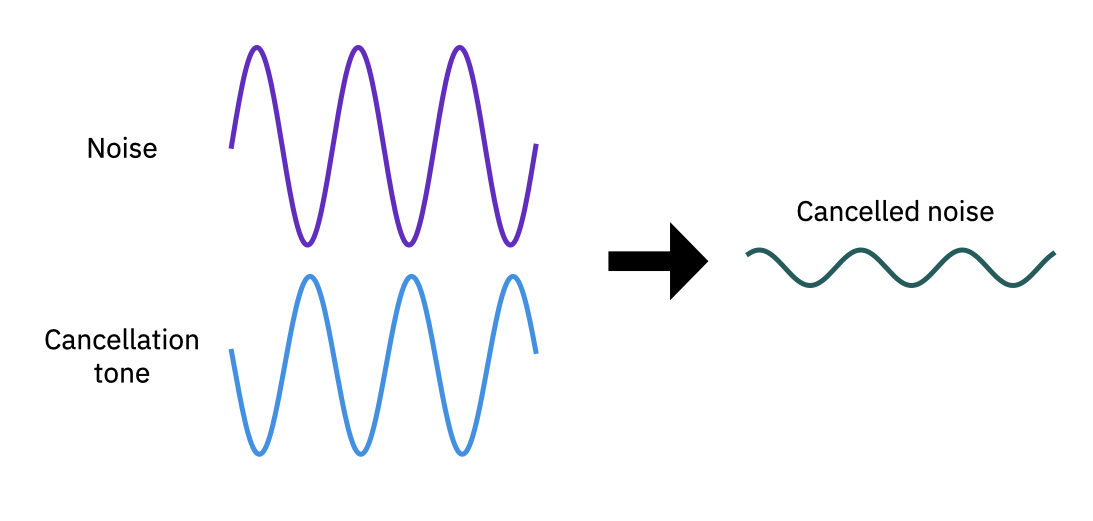
Fig. 1 Approximate cancellation of a noise signal by a tone of nearly equal amplitude and offset by a phase of \(\sim \pi\).¶
As shown above, when the phase difference is close to an odd multiple of \(\pi\), the superposition of the two waves results in interference, and an output that is significantly reduced compared to the original. The result is the signal of interest unencumbered by noise. Although this processing is done by digital circuits, the amplitude and phase are continuous variables that can never be matched perfectly, resulting in incomplete correction.
A general computation on a quantum computer proceeds in very much the same way as noise cancellation. To begin, one prepares a superposition of all possible computation states. This is then used as an input to a quantum circuit that selectively interferes the components of the superposition according to a prescribed algorithm. What remains after cancelling the relative amplitudes and phases of the input state is the solution to the computation performed by the quantum circuit.
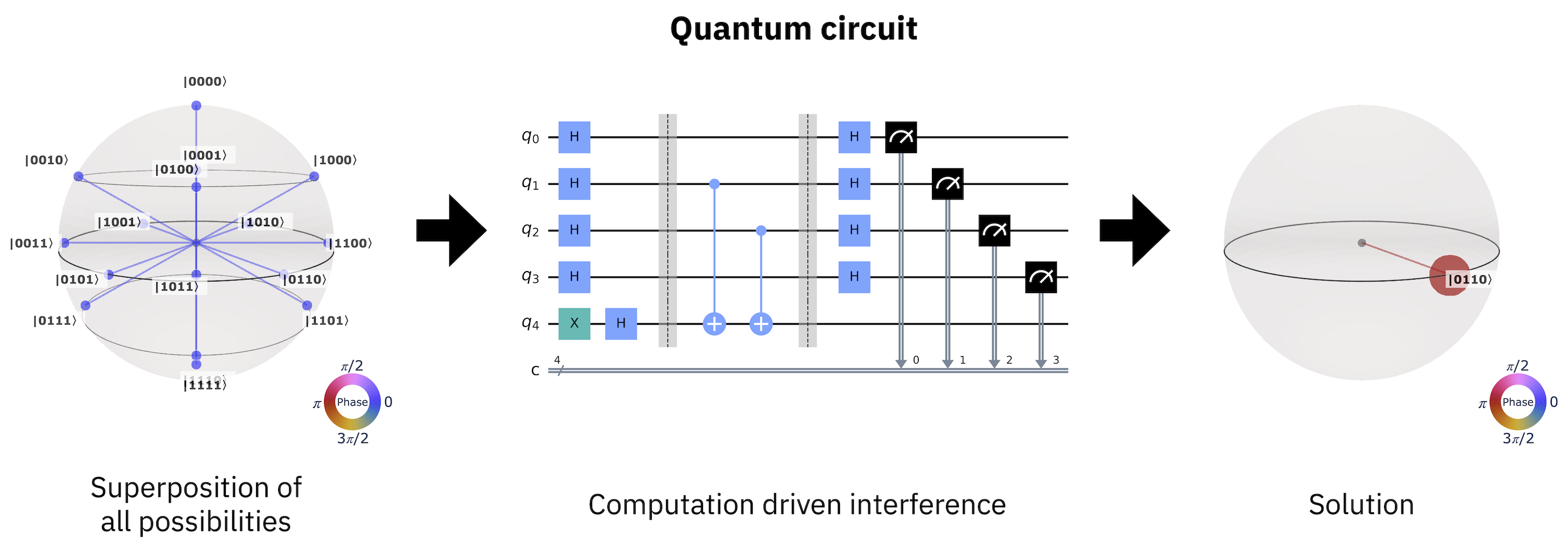
Fig. 2 Quantum computation as an interference generation process.¶
Entanglement¶
The second principle of quantum mechanics that quantum computation can utilize is the phenomena of entanglement. Entanglement refers to states of more than one qubit (or particles in general) in which the combined state of the qubits contains more information than the qubits do independently. The overwhelming majority of multi-qubit quantum states are entangled, and represent a valuable resource. For example, entangled states between qubits can be used for quantum teleportation, where a shared entangled state of two qubits can be manipulated to transfer information from one qubit to another, regardless of the relative physical proximity of the qubits. Entangled states, as natural states of quantum systems, are also of importance in disciplines such as quantum chemistry and quantum simulation where the solution(s) often take the form of entangled multi-qubit states. One can also utilize highly-entangled quantum states of multiple qubits to, for example, generate certifiably random numbers. There is even a Qiskit package to do this!
Quantum circuits¶
Algorithms and applications that utilize quantum mechanical resources can be easily and efficiently written in the language of quantum circuits. A quantum circuit is a computational routine consisting of coherent quantum operations on quantum data, such as that held in qubits, and concurrent real-time classical computation. Each horizontal line, or wire in a circuit represents a qubit, with the left end of the wire being the initial quantum data, and the right being the final quantum data generated by the quantum circuit’s computation. Operations on qubits can be placed on these wires, and are represented by boxes.

Fig. 3 Quantum state teleportation circuit revisited.¶
Quantum circuits enable a quantum computer to take in classical information and output a classical solution, leveraging quantum principles such as interference and entanglement to perform the computation.
A typical quantum algorithm workflow consists of:
The problem we want to solve,
A classical algorithm that generates a description of a quantum circuit,
The quantum circuit that needs to be run on quantum hardware,
And the output classical solution to the problem that it produces.
Quantum gates form the primitive operations on quantum data. Quantum gates represent information preserving, reversible transformations on the quantum data stored in qubits. These “unitary” transformations represent the quantum mechanical core of a quantum circuit. Some gates such as \(X\) (also written as \(\oplus\)) and \(CX\) have classical analogs such as bit-flip and \(XOR\) operations, respectively, while others do not. The Hadamard (\(H\)) gate, along with the parameterized rotates \(rX(\theta)\) and \(rY(\theta)\), generate superposition states, while gates such as \(Z\), \(rZ(\theta)\), \(S\), and \(T\) impart phases that can be used for interference. Two-qubit gates like the \(CX\) gate are used to generate entanglement between pairs of qubits, or to “kick” the phase from one qubit to another. In contrast to gates, operations like “measurement”, represented by the meter symbol in a box with a line connecting to a “target” wire, extract partial information about a qubit’s state, often losing the phase, to be able to represent it as a classical bit and write that classical bit onto the target wire (often a fully classical wire in some readout device). This is the typical way to take information from the quantum data into a classical device. Note that with only \(H\), \(rZ(\theta)\), \(CX\), and measurement gates, i.e. a universal gate set, we can construct any quantum circuit, including those efficiently computing the dynamics of any physical system in nature.
Some workloads contain an extended sequence of interleaved quantum circuits and classical computation, for example variational quantum algorithms execute quantum circuits within an optimization loop. For these workloads, system performance increases substantially if the quantum circuits are parameterized, and transitions between circuit execution and non-current classical computation are made efficient. Consequently, we define near-time computation to refer to computations with algorithms that make repeated use of quantum circuits with hardware developed to speed up the computation time. In near-time computation, the classical computation occurs on a time scale longer than the coherence of the quantum computation. Contrast this with real-time computation, where the classical computation occurs within the decoherence time of the quantum device.
Constructing complex quantum circuits with minimal effort is at the heart of Qiskit. With only a few lines of code, it is possible to construct complex circuits like the one above
qr = QuantumRegister(3, 'q')
cr = ClassicalRegister(2, 'zx_meas')
qc = QuantumCircuit(qr,cr)
qc.reset(range(3))
qc.barrier()
qc.h(1)
qc.cx([1,0],[2,1])
qc.h(0)
qc.barrier()
qc.measure([0,1], [0,1])
qc.barrier()
qc.z(2).c_if(cr, 1)
qc.x(2).c_if(cr, 2)
that support a rich feature set of operations, and can be passed to a range of quantum computers or classical simulators.
Quantum computers¶
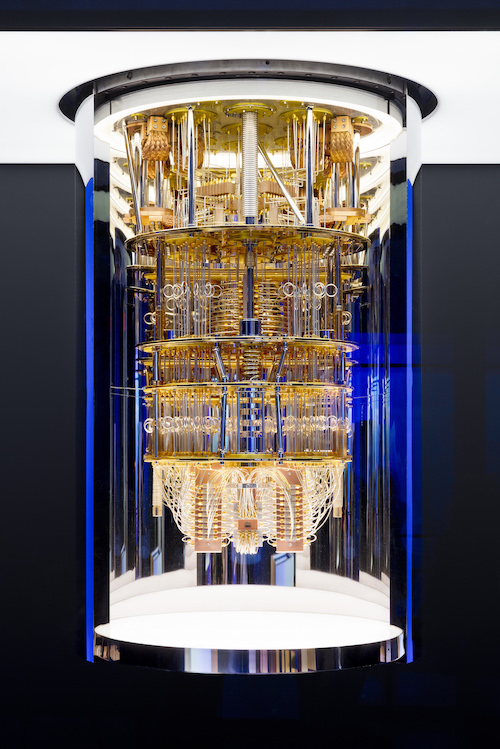
Fig. 4 A view inside the IBM Quantum System One.¶
Quantum computers which are programmed using quantum circuits can be constructed out of any quantum technology that allows for defining qubit elements, and can implement single- and multi-qubit gate operations with high-fidelity. At present, architectures based on superconducting circuits, trapped-ions, semiconducting quantum-dots, photons, and neutral atoms, are actively being developed, and many are accessible to users over the internet. Qiskit is agnostic with respect to the underlying architecture of a given quantum system, and can compile a quantum circuit to match the entangling gate topology of a quantum device, map the circuit instructions into the native gate set of the device, and optimize the resulting quantum circuit for enhanced fidelity.
As with the noise cancellation example above, the amplitude and phase of qubits are continuous degrees of freedom upon which operations can never be done exactly. These gates errors, along with noise from the environment in which a quantum computer resides, can conspire to ruin a computation if not accounted for in the compilation process, and may require additional mitigation procedures in order to obtain a high-fidelity output on present day quantum systems susceptible to noise. Qiskit is capable of taking into account a wide range of device calibration metrics (see figure below) in its compilation strategy, and can select an optimal set of qubits on which to run a given quantum circuit. In addition, Qiskit hosts a collection of noise mitigation techniques for extracting a faithful representation of a quantum circuits output.
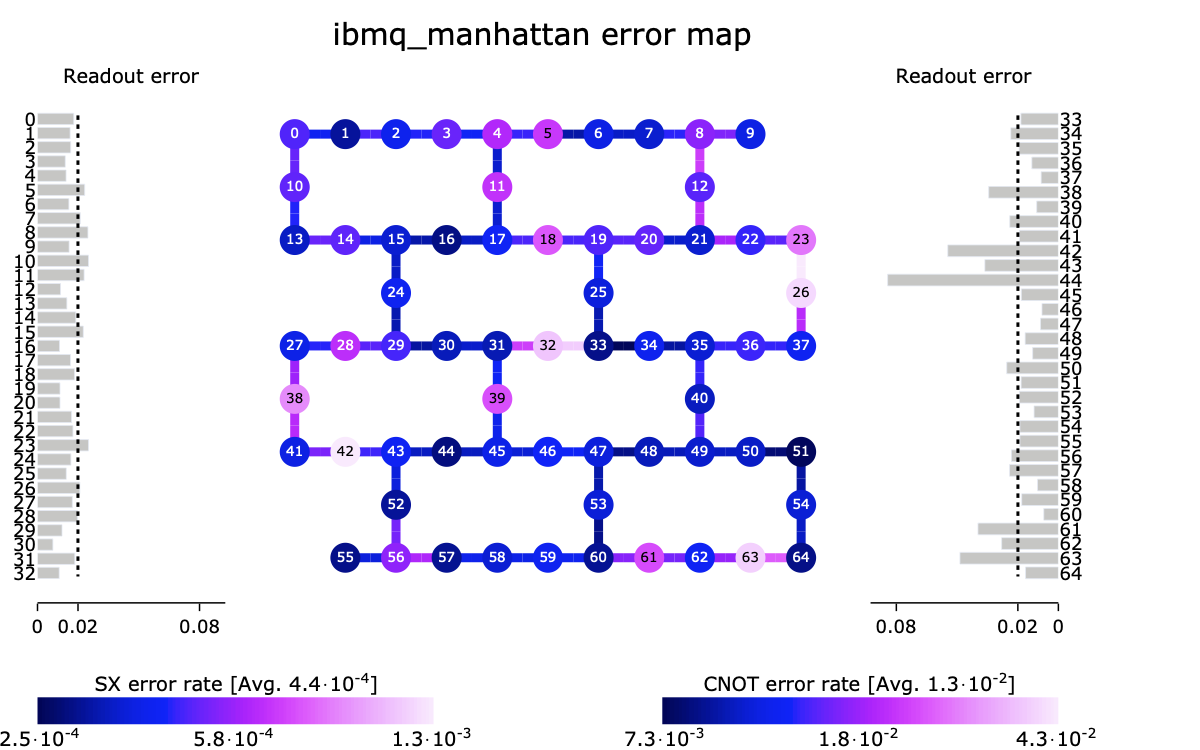
Fig. 5 Topology and error rates for the IBM Quantum ibmq_manhattan system.¶
Where to go from here¶
Hopefully we have given the reader a taste of what quantum computation has to offer and you are hungry for more. If so, there are several resources that may be of interest:
Getting started with Qiskit - Dive right into Qiskit.
Field guide to quantum computing : A gentle physics-based introduction written by some of the founders of quantum computation that makes use of the interactive circuit composer.
Qiskit textbook : A university quantum algorithms/computation course supplement based on Qiskit.
